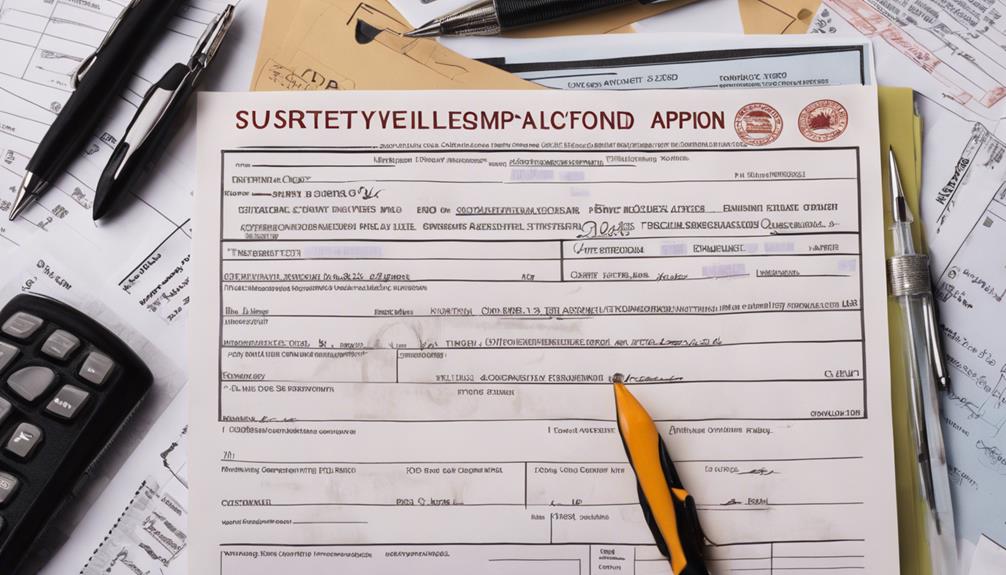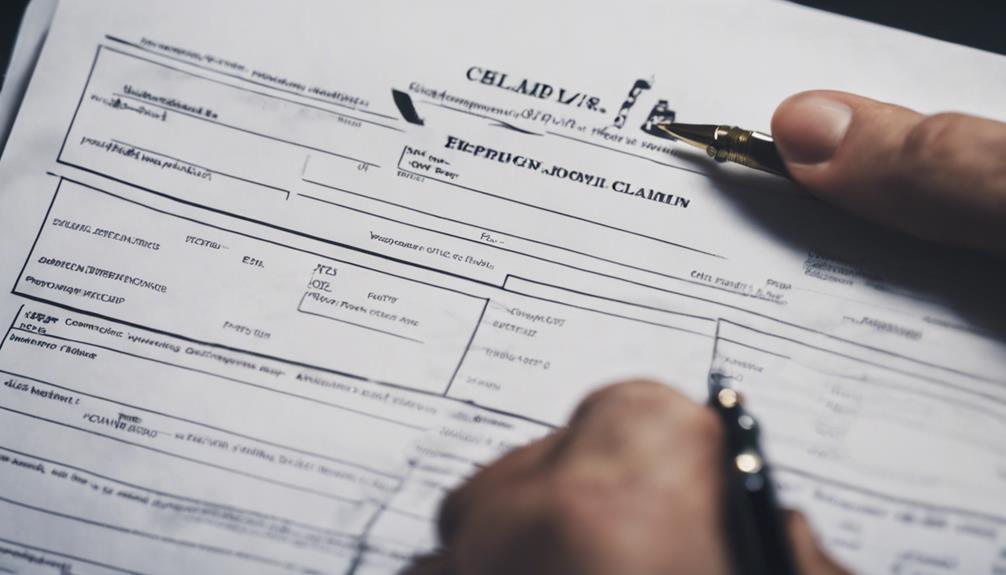When you've misplaced your vehicle title in Wisconsin, navigating the process of obtaining a Motor Vehicle Lost Title Bond can seem daunting. This bond is crucial not just for reclaiming ownership but also for protecting yourself against potential disputes. You'll need to gather specific documentation and meet eligibility requirements, but understanding each step is key to a smooth experience. So, what exactly do you need to know to ensure you're on the right path? Let's explore the ins and outs of securing this bond and what it means for your vehicle ownership.
Understanding Lost Title Bonds

Understanding lost title bonds can save you a lot of headaches when you've misplaced your vehicle's title. A lost title bond serves as a type of surety bond, ensuring that you can legally claim ownership of your vehicle. When you can't find your title, you might need to obtain this bond before your state will issue a duplicate title.
To get a lost title bond, you'll typically need to apply through a bonding company. They'll assess your situation, and if approved, you'll pay a premium based on the vehicle's value. This bond acts as a safety net, protecting the state and any previous owners from potential claims if someone else comes forward, asserting they own the vehicle.
Once you secure the bond, you'll file it with your local Department of Motor Vehicles (DMV) along with your application for a new title. It's essential to keep a copy of the bond for your records, as it's proof of your ownership claim.
Importance of a Lost Title Bond
A lost title bond plays a vital role in protecting both you and the state when you've misplaced your vehicle's title. When you apply for a lost title bond, you're essentially providing a guarantee that you own the vehicle and that no one else can claim it. This bond acts as a safety net, ensuring that if someone comes forward with a legitimate claim to the vehicle, you're covered financially.
By securing a lost title bond, you can facilitate the process of obtaining a new title, allowing you to legally sell, register, or insure your vehicle without unnecessary delays. It also helps prevent potential fraud, as it ensures that the rightful owner is recognized and protected.
Moreover, the bond fosters trust between you and the state. The state can rest assured that it won't be held liable for issuing a new title if a dispute arises later.
In essence, having a lost title bond simplifies your path to vehicle ownership restoration while safeguarding your interests and those of the state. If you ever find yourself without a title, understanding the importance of this bond can help you navigate the situation more effectively.
Eligibility for Obtaining a Bond

When you're ready to apply for a lost title bond, it's crucial to know if you meet the eligibility requirements. Generally, to qualify for a lost title bond, you must be the legal owner of the vehicle in question. This means you should have proof of ownership, such as a bill of sale, registration documents, or any other relevant paperwork.
You also need to ensure that there are no outstanding liens or claims against the vehicle. If there's a lien, you'll need to clear it up before applying for the bond.
Additionally, your personal credit history can play a role in your eligibility. A good credit score typically helps facilitate the bonding process.
Keep in mind that the bonding company may ask for specific information, including details about the vehicle and any previous title history. Some states may impose extra requirements, so it's wise to check local regulations.
Steps to Acquire a Lost Title Bond
Once you've confirmed your eligibility for a lost title bond, the next step is to gather the necessary documentation and follow a straightforward process.
Start by contacting a surety bond company or an insurance agent who specializes in these bonds. They'll guide you through the specifics of what's required in your situation.
Next, complete the bond application. This usually involves providing details about the vehicle, such as its make, model, and VIN.
Be prepared to answer questions regarding how the title was lost, as this will help the bonding company assess the risk.
After submitting your application, you may need to pay a premium, which is typically a percentage of the bond amount.
Once your application is approved and payment is made, the bonding company will issue the lost title bond.
Required Documentation for Bond

To successfully obtain a lost title bond, you'll need to gather specific documentation that supports your application.
First, you'll want to provide proof of ownership for the vehicle in question. This can include a bill of sale, previous title, or registration documents. If you don't have these, you may need to submit a signed affidavit explaining how the title was lost.
Next, you'll need to fill out a bond application form. This form typically requires details about the vehicle, such as its make, model, year, and Vehicle Identification Number (VIN). Make sure all information is accurate to avoid delays.
Additionally, you may be asked to present identification, like a driver's license or state ID, to verify your identity.
Some surety companies might also request a credit report to evaluate your financial reliability.
Cost of a Lost Title Bond
The cost of a lost title bond can vary based on several factors, including the vehicle's value and your creditworthiness. Typically, you might expect to pay between 1% to 15% of the bond amount.
For instance, if your vehicle is valued at $10,000, the bond amount could be around that figure, leading to a cost anywhere from $100 to $1,500.
Your credit score plays a significant role in determining the final premium. If you have a strong credit history, you may qualify for lower rates. Conversely, if your credit score is low, expect to pay a higher percentage.
Additionally, the bonding company may charge a nominal fee for processing, which can range from $25 to $50.
It's wise to shop around and compare quotes from different bonding companies. Some may offer competitive rates or special promotions that can help you save money.
How to File a Claim

Filing a claim on your lost title bond is a straightforward process that can usually be completed in a few simple steps.
First, gather all necessary documents, such as your identification, the bond itself, and any paperwork related to your vehicle's title. This will help streamline the process and ensure you have everything you need.
Next, contact the surety company that issued your lost title bond. They'll provide you with their specific claims process, which may include filling out a claim form. Make sure to provide accurate information and any supporting documents to strengthen your claim.
After you submit your claim, keep a record of all communications with the surety company. It's essential to follow up regularly to check on the status of your claim.
Be patient, as processing times can vary depending on the company.
Frequently Encountered Issues
Navigating the process of claiming a lost title bond can come with its share of challenges. One common issue you'll face is ensuring you have all the necessary documentation. Missing paperwork can delay your claim, so double-check that you've gathered everything required by your state's regulations.
Another hurdle is dealing with the bond company. Sometimes, they may require additional information or clarification, which can lead to frustration. It's important to communicate clearly and promptly with them to avoid any misunderstandings.
You might also encounter issues with the vehicle's previous ownership history. If there are discrepancies or unresolved liens, it could complicate your ability to secure the bond. Make sure to investigate any potential issues beforehand.
Lastly, timelines can be unpredictable. Some claims are processed quickly, while others can take weeks. Patience is key, but it's also wise to follow up regularly to keep your claim moving.
Conclusion
In conclusion, obtaining a Motor Vehicle Lost Title Bond in Wisconsin is a straightforward process that protects your ownership rights. By gathering the necessary documentation and following the steps outlined, you can secure your new title and avoid potential disputes. Remember, this bond not only safeguards your interests but also helps the state and previous owners. Don't let a lost title hold you back—take action today and get back on the road with peace of mind!

